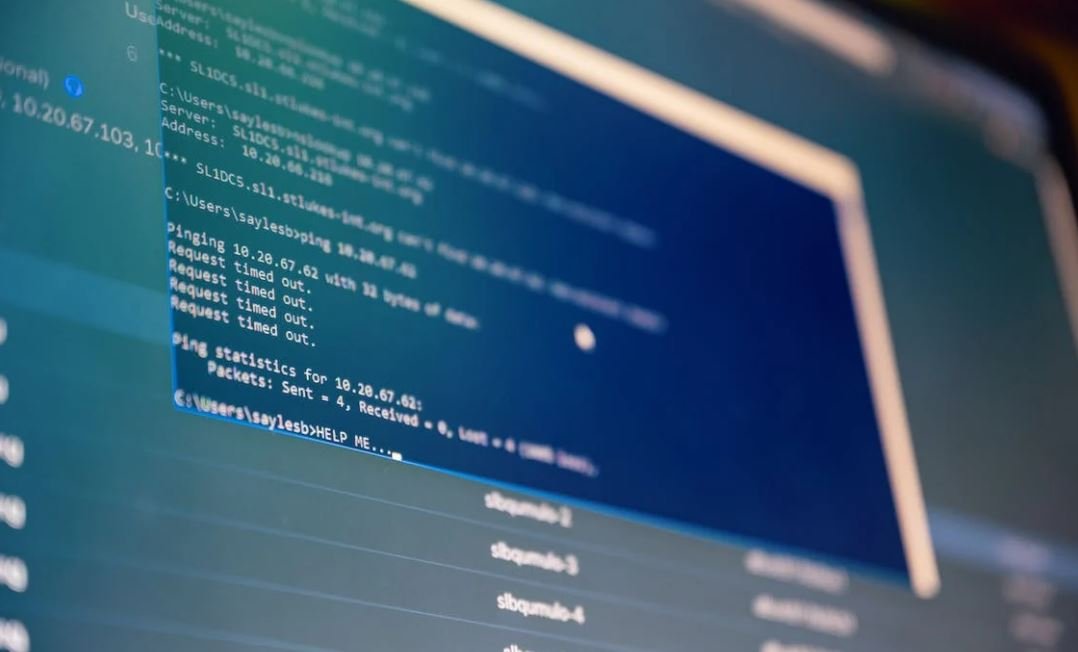Computer Science and Sports
Computer science and sports may seem like unrelated fields, but they have actually become increasingly intertwined as technology continues to advance. In today’s world, computer science is being used to enhance the way we play, spectate, and analyze sports. From the use of algorithms to analyze player performance to virtual reality training simulations, computer science is revolutionizing the sports industry.
Key Takeaways:
- Computer science is reshaping the way we play, spectate, and analyze sports.
- Advanced algorithms are being used to analyze player performance and make strategic decisions.
- Virtual reality training simulations are helping athletes improve their skills and reduce injuries.
The use of advanced algorithms in sports has become increasingly prevalent. By analyzing vast amounts of data, algorithms can help coaches make informed decisions and create effective game strategies. They can also evaluate player performance, track movements, and identify patterns that may go unnoticed by the human eye. This data-driven approach enables teams to optimize their performance and increase their chances of success. *One interesting approach is the use of machine learning algorithms that can predict the outcome of a game based on various factors such as player statistics and team performance.*
In addition to algorithms, virtual reality (VR) is another area where computer science is making a significant impact. VR training simulations allow athletes to practice and improve their skills in a virtual environment. This technology provides a safe space for athletes to learn new techniques, develop muscle memory, and gain a competitive edge. By replicating real-game scenarios, VR simulations help athletes become better prepared for high-pressure situations. *One interesting application of VR is in rehabilitating injured athletes, where virtual environments can be used to regain strength and coordination.*
Let’s take a closer look at three notable examples where computer science has made a significant impact in the sports industry:
| Table 1: Data Analytics in Baseball |
|---|
| Data-driven scouting and player evaluation |
| Pitch selection optimization |
| Defensive positioning strategies |
Beyond baseball, basketball has also embraced computer science technologies. The use of player tracking systems during games provides detailed information on movement patterns, speeds, and even player fatigue levels. This valuable data is used by coaches and analysts to inform game strategies, monitor player workload, and prevent injuries. *One interesting fact is that the NBA uses a sophisticated player tracking system that records player movements up to 25 times per second.*
Table 2: Evolution of Player Tracking in Basketball
- Player movement analysis
- Performance monitoring and workload management
- Injury prevention
Football is another sport where computer science has made a significant impact. In addition to player analytics and performance tracking, motion capture technology has been widely used to create realistic animations for video games and training simulations. This technology captures the movements of athletes and translates them into digital characters, creating an immersive and realistic experience. *One interesting fact is that motion capture technology has been used in football video games to replicate player movements and enhance the gaming experience.*
Table 3: Motion Capture Technology in Football
- Realistic animations in video games
- Training simulations for tactical analysis
- Injury prevention and rehabilitation
Computer science continues to play a crucial role in shaping the world of sports. From data analytics to virtual reality and motion capture technology, these advancements are reshaping the way athletes train, compete, and entertain. As technology continues to evolve, we can expect even more innovations and exciting developments in the future. So, whether you are a sports fan or a computer science enthusiast, keep an eye on the fascinating intersection of these two fields.

Common Misconceptions
Misconception 1: Computer science doesn’t have any application in sports
One common misconception is that computer science has no relevance in the field of sports. However, this is far from the truth. Computer science plays a crucial role in various aspects of sports performance analysis, data management, and technology-driven solutions.
- Computer science is used in developing sports analytics software that helps analyze data and extract valuable insights.
- Computer vision techniques are employed in sports to track players’ movements and refine game strategies.
- Computer algorithms enable the creation of virtual training programs and simulations for athletes.
Misconception 2: Sports professionals don’t need computer science skills
Another misconception is that sports professionals are not required to possess computer science skills. In reality, having a solid understanding of computer science can significantly enhance an individual’s performance and career prospects within the sports industry.
- Sports professionals can leverage computer science skills to analyze their performance data and identify areas for improvement.
- Understanding computer science principles can help athletes make better decisions based on data-driven insights.
- Game analysts and coaches often rely on computer science techniques to create effective game plans and strategies.
Misconception 3: Computer science and sports are unrelated fields
Some mistakenly believe that computer science and sports are entirely unrelated fields with no connections between them. However, computer science and sports often intersect, enabling advancements, innovations, and improvements in sports management and performance.
- Computer science is pivotal in developing wearable technologies that help monitor athletes’ health and performance during training and competitions.
- Sports broadcasting heavily utilizes computer graphics and visual effects to enhance the viewing experience.
- The development of sports-related mobile applications and websites heavily relies on computer science principles.
Misconception 4: Computer science can replace traditional coaching methods
There is a misconception that computer science can replace the role of traditional coaching methods. While technology and computer science can enhance coaching techniques, they cannot replace the invaluable human element in sports.
- Coaches possess crucial interpersonal skills and intuition that is not replaceable by computer science solutions.
- Computer programs can assist coaches in analyzing data and providing insights, but the final decision-making process still requires human judgment.
- The motivational and leadership aspects of coaching go beyond the realm of computer science.
Misconception 5: Computer science is only relevant to professional sports
Many assume that computer science is only applicable in professional sports settings. However, computer science can benefit sports at all levels, from grassroots to amateur and recreational sports.
- Computer science can help organize and manage sports tournaments and leagues, even at a local level.
- Amateur athletes can utilize computer science-based fitness apps and wearables to track their progress and set personal goals.
- Computer science can enhance the accessibility of sports by providing online platforms for people to participate and connect with others in sports communities.

Introduction
Computer science and sports may seem like two distinct fields, but they often intersect in fascinating ways. Whether it’s the use of algorithms to predict game outcomes or the development of advanced technology for athletic performance, computer science plays a significant role in shaping the world of sports. In this article, we explore various aspects of this exciting partnership through a series of interactive and engaging tables.
1. Athlete Performance Records
Take a glance at top athletes’ stellar records that demonstrate their achievements in various sports disciplines. From world records in track and field to astonishing numbers in basketball, these exceptional performers have pushed the boundaries of human potential, inspiring both sports enthusiasts and computer scientists.
| Athlete | Sport | Record |
|—————-|—————-|———————–|
| Usain Bolt | Track and Field| 100m: 9.58s |
| Michael Phelps | Swimming | Most Olympic golds: 23|
| LeBron James | Basketball | Career points: 35,367 |
| Simone Biles | Gymnastics | Most World medals: 25 |
2. Sports Data Analysis
The power of data analysis and predictive modeling in sports is undeniable. From game statistics to player performance metrics, extracting meaningful insights from vast datasets helps teams make strategic decisions. Here, we showcase data analysis examples from different sports domains highlighting the impact of computer science advancements on team dynamics and game outcomes.
| Year | Team | Win-Loss Record | Points Scored | Points Conceded |
|——|—————-|—————-|—————|—————–|
| 2020 | Liverpool FC | 32-3-3 | 85 | 33 |
| 2020 | Kansas City Chiefs | 14-2 | 473 | 313 |
| 2020 | Los Angeles Lakers | 52-19 | 9,488 | 9,046 |
| 2020 | Tampa Bay Lightning | 43-21-6 | 243 | 222 |
3. Virtual Reality in Sports
Immersive experiences revolutionize training and spectator engagement in the realm of sports. Virtual reality (VR) technologies allow athletes to practice in virtual environments, enhance spatial awareness, and simulate challenging scenarios. Check out the diverse applications of VR across different sports disciplines.
| Sport | VR Application |
|—————-|——————————————————————|
| Football | Virtual reality game analysis and tactical strategy training |
| Tennis | First-person perspective simulation for improved shot placements |
| Golf | Virtual courses for practicing swings and honing techniques |
| Soccer | Immersive training scenarios to enhance teamwork and coordination |
4. Algorithms to Predict Match Outcomes
Algorithms and machine learning models have gained popularity for their ability to predict match results accurately. Sports analysts and betting enthusiasts rely on these predictions, which account for various factors such as team form, player performance, and historical data. Uncover how these sophisticated algorithms can forecast the outcome of competitive sporting events.
| Match | Predicted Outcome | Actual Outcome |
|———————|——————–|—————-|
| Super Bowl LIV | Kansas City Chiefs | Kansas City Chiefs |
| UEFA Champions League Final 2020 | Bayern Munich | Bayern Munich |
| NBA Finals 2020 | Los Angeles Lakers | Los Angeles Lakers |
| Wimbledon 2019 Men’s Final | Novak Djokovic | Novak Djokovic |
5. Wearable Technology in Athletics
The development of wearable devices has revolutionized how athletes monitor and improve their performance. From fitness trackers to smart clothing, these technologies provide real-time data on crucial indicators such as heart rate, sleep quality, and training intensity. Explore how wearable technology enhances athletic training and wellness across different sports.
| Sport | Wearable Technology |
|—————-|———————————————————————–|
| Running | GPS-enabled smartwatches for distance tracking and pace analysis |
| Cycling | Cyclist-specific helmets with built-in trackers for safety and performance metrics |
| Swimming | Waterproof fitness bands for stroke counting and lap time measurements |
| Basketball | Sensor-equipped shoes for assessing jump height and movement patterns |
6. eSports Growth and Revenue
eSports, competitive video gaming, has grown exponentially in recent years, attracting a massive global audience. Revenue streams associated with eSports competitions and events have also skyrocketed. Discover the astonishing numbers that highlight the financial success and popularity of this emerging field.
| Year | eSports Revenue (in billions USD) |
|——-|———————————–|
| 2018 | $0.9 |
| 2019 | $1.1 |
| 2020 | $1.6 |
| 2021 | $2.3 |
7. Biomechanics Analysis in Sports
Biomechanical analysis allows researchers and sports scientists to uncover the mechanics behind athletic movements. Combining computer simulations, motion capture technologies, and detailed metrics, this field provides valuable insights into optimizing technique and preventing injuries. Dive into some fascinating biomechanical findings from well-known sports.
| Sport | Notable Finding |
|—————-|————————————————————————|
| Tennis | Optimal racket swing speed and technique for powerful serves |
| Gymnastics | Analysis of joint angles leading to improved balance and flexibility |
| Golf | Determination of optimal club-head speed and angle for long drives |
| Soccer | Kinematic study of soccer kicks for enhanced accuracy and force control |
8. Robotics in Sports
Robotics and automation have expanded their presence in sports, enhancing training, rehabilitation, and the fan experience. From robotic ball throwers to AI-powered coaches, these advancements offer new opportunities to push the boundaries of human performance. Discover examples of robotics integration across various sports.
| Sport | Robotic Application |
|—————-|———————————————————————-|
| Tennis | Automated ball machines for precision serves and drills |
| Baseball | Robotic pitching to simulate different throw types and speeds |
| Swimming | Underwater robots for monitoring stroke technique and efficiency |
| Soccer | AI-based robotic coaches for tactical analysis and training sessions |
9. Cybersecurity in Sports
With the increasing reliance on technology, protecting sensitive data and preventing cyberattacks is critical. Sports organizations and events involve vast amounts of personal and financial information, making cybersecurity a crucial aspect. Explore some real-life cybersecurity incidents that have affected the realm of sports.
| Incident | Affected Organization | Date |
|————————-|———————————————–|——————-|
| FIFA data breach | Fédération Internationale de Football Association | November 2018 |
| Russian doping scandal | World Anti-Doping Agency | 2015-2018 |
| Houston Astros sign-stealing scandal | Major League Baseball | 2017-2018 |
| Olympic drug testing hack | World Anti-Doping Agency | September 2016 |
10. Facial Recognition Technology in Stadiums
Facial recognition technology finds applications in enhancing security measures within sports facilities. By quickly identifying individuals, it aids in preventing unauthorized entry, management of large crowds, and enhancing overall safety. Take a look at stadiums already implementing this cutting-edge technology.
| Stadium | Location |
|——————–|——————————————–|
| Mercedes-Benz Stadium | Atlanta, United States |
| Wembley Stadium | London, United Kingdom |
| Maracanã Stadium | Rio de Janeiro, Brazil |
| Melbourne Cricket Ground | Melbourne, Australia |
Conclusion
The synergy between computer science and sports continues to shape the world of athletics in unprecedented ways. From using algorithms to predict outcomes and wearables to enhance performance monitoring to the integration of virtual reality and biometrics, technology has transformed how athletes compete and fans engage with sports. As we progress further into the digital age, the partnership between computer science and sports will likely bring forth new innovations and elevate the boundaries of human achievement in athletic pursuits.
Computer Science and Sports FAQ
1. What is computer science?
Computer science is the study of computers and computational systems. It involves the design and development of computer software and hardware, as well as the theoretical and mathematical foundations behind these systems.
2. How does computer science relate to sports?
Computer science has various applications in the field of sports. It is used to develop advanced statistical models, design better training programs, analyze player performance, improve sports equipment, and enhance fan engagement through technologies like virtual reality and data visualization.
3. What is data analytics in sports?
Data analytics in sports involves the collection, processing, and analysis of data to gain insights and make informed decisions. Computer science plays a crucial role in this process by developing algorithms to analyze vast amounts of sports-related data, such as player statistics, game footage, and sensor-generated data.
4. How do computer simulations contribute to sports?
Computer simulations allow for the virtual modeling and testing of various sports scenarios. They help in predicting outcomes, evaluating strategies, and optimizing team performance. Computer science enables the creation and refinement of these simulations through advanced mathematical models and algorithms.
5. Can computer science improve athlete performance?
Yes, computer science can significantly improve athlete performance. It enables the development of technologies like motion capture systems, wearable sensors, and biomechanical analysis tools that provide valuable feedback for athletes and coaches. Additionally, computer science helps in creating personalized training programs based on an athlete’s strengths, weaknesses, and performance data.
6. How are computer science and artificial intelligence used in sports?
Computer science and artificial intelligence (AI) are utilized in sports for various purposes. AI algorithms help analyze game footage, identify patterns, and make predictions. They are also used in sports robotics, smart stadiums, and automated systems for referee decision-making.
7. How is computer science used in sports broadcasting?
Computer science plays a vital role in sports broadcasting, especially in generating real-time graphics, statistical analysis, and visual effects. It enables the creation of virtual elements like player visualizations and augmented reality overlays, enhancing the viewing experience for fans.
8. Can computer science make sports safer?
Yes, computer science can contribute to making sports safer. It aids in the development of technologies for injury prevention, such as impact sensors, biomechanical analysis systems, and concussion management tools. Computer simulations are also used to evaluate and optimize sports equipment for better safety and performance.
9. How does computer science impact sports research?
Computer science plays a crucial role in sports research by providing tools and methodologies for data collection, analysis, and visualization. It allows researchers to study complex phenomena, simulate scenarios, and draw evidence-based conclusions that contribute to advancements in sports science.
10. What are some future applications of computer science in sports?
The future applications of computer science in sports are vast and exciting. Examples include the use of virtual reality for immersive fan experiences, the integration of AI-powered coaching assistants, the development of wearable technologies with real-time feedback, and the advancement of sports analytics through machine learning algorithms.




